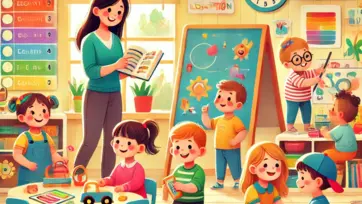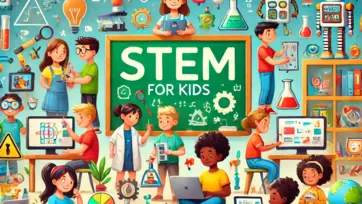In today's digital age, learning is no longer confined to classrooms. Children can enhance their cognitive skills through interactive and engaging learning games. These games are designed to develop problem-solving, memory, creativity, and logical thinking while keeping kids entertained. If you want to ensure your child’s screen time is productive, here are some of the best learning games that promote brain development.
1. ABCmouse (Ages 2-8)
ABCmouse is a comprehensive learning app that covers subjects like reading, math, science, and art. It provides interactive activities, puzzles, and educational games tailored to different age levels.
Brain Benefits:
- Enhances early literacy and numeracy skills
- Improves memory retention with interactive lessons
- Encourages critical thinking through problem-solving tasks
2. Prodigy Math Game (Ages 6-12)
Prodigy is a math-based adventure game that turns solving equations into an exciting quest. Kids battle opponents by answering math questions correctly.
Brain Benefits:
- Develops problem-solving and logical thinking skills
- Strengthens math fluency
- Enhances decision-making abilities as kids strategize their gameplays
3. BrainPOP Jr. (Ages 5-9)
BrainPOP Jr. offers animated educational videos followed by quizzes and games. It covers science, social studies, English, and more.
Brain Benefits:
- Encourages conceptual learning through engaging visuals
- Improves comprehension and retention
- Promotes active learning with quizzes and creative challenges
4. Endless Alphabet (Ages 3-7)
Endless Alphabet is a fun word game that helps kids build their vocabulary with animated letters and short word puzzles.
Brain Benefits:
- Boosts early reading skills
- Enhances phonics awareness
- Improves word recognition and spelling
5. Osmo - Genius Kit (Ages 5-12)
Osmo combines physical and digital learning by using an iPad and interactive objects. It includes puzzles, math games, and creativity exercises.
Brain Benefits:
- Develops spatial reasoning and logic
- Encourages creative problem-solving
- Enhances fine motor skills with hands-on interaction
6. Minecraft: Education Edition (Ages 7+)
Minecraft is a popular sandbox game that allows kids to build virtual worlds using 3D blocks. The Education Edition integrates learning activities into gameplay.
Brain Benefits:
- Enhances spatial intelligence and creativity
- Promotes teamwork and collaboration
- Improves problem-solving and planning skills
7. Lumosity Kids (Ages 6-12)
Lumosity Kids offers brain-training games designed to improve memory, attention, and problem-solving skills.
Brain Benefits:
- Enhances cognitive flexibility
- Improves memory retention and concentration
- Strengthens logical reasoning skills
8. Toca Life World (Ages 4-10)
Toca Life World is an open-ended game where kids can create their own stories and explore different imaginative worlds.
Brain Benefits:
- Boosts creativity and storytelling skills
- Encourages decision-making and independence
- Promotes social-emotional learning
9. ChessKid (Ages 6+)
ChessKid is a child-friendly chess platform that teaches kids how to play chess through fun lessons and interactive challenges.
Brain Benefits:
- Enhances strategic thinking and foresight
- Improves pattern recognition and problem-solving
- Strengthens concentration and patience
10. PBS Kids Games (Ages 3-8)
PBS Kids offers a collection of educational games featuring characters from popular children’s shows. Games cover subjects like math, reading, and science.
Brain Benefits:
- Strengthens basic math and literacy skills
- Encourages critical thinking and creativity
- Enhances problem-solving and logical reasoning
11. Duolingo Kids (Ages 4-10)
Duolingo Kids is a language-learning app that introduces children to new languages through engaging lessons and fun activities.
Brain Benefits:
- Improves language acquisition and pronunciation
- Enhances memory and cognitive flexibility
- Builds listening and comprehension skills
12. Kahoot! Kids (Ages 5+)
Kahoot! Kids offers interactive quizzes and trivia games covering various educational topics.
Brain Benefits:
- Boosts knowledge retention and recall
- Encourages friendly competition and motivation
- Enhances quick thinking and decision-making
13. CodeSpark Academy (Ages 5-9)
CodeSpark Academy introduces kids to coding through fun, interactive challenges.
Brain Benefits:
- Develops computational thinking skills
- Enhances logical problem-solving abilities
- Encourages creativity through game design
14. Sago Mini World (Ages 2-5)
Sago Mini World offers interactive play-based learning with a variety of mini-games that teach problem-solving, creativity, and motor skills.
Brain Benefits:
- Improves fine motor skills and hand-eye coordination
- Encourages creative thinking and exploration
- Strengthens social-emotional skills
15. DragonBox Algebra (Ages 5-12)
DragonBox Algebra is a math-based game that introduces algebraic concepts in a fun and engaging way.
Brain Benefits:
- Develops abstract thinking and problem-solving
- Enhances numerical fluency
- Strengthens critical thinking skills
Conclusion
Educational games are a fantastic way to combine learning with fun. These games boost cognitive development, improve problem-solving skills, and encourage creativity. By incorporating these games into your child’s routine, you can ensure that screen time becomes a productive and enriching experience.








